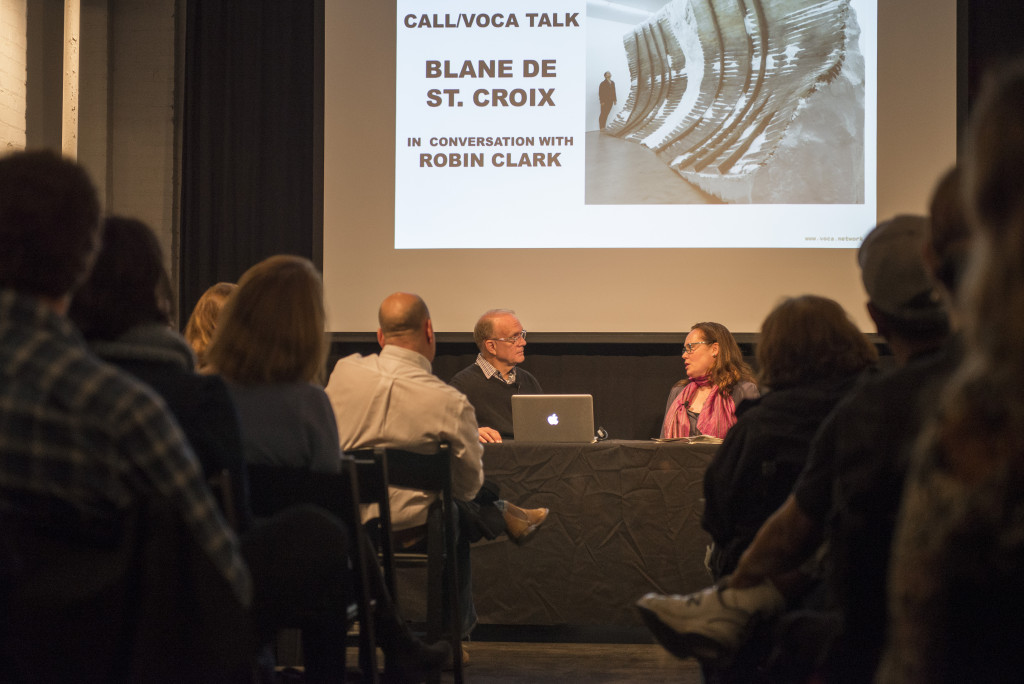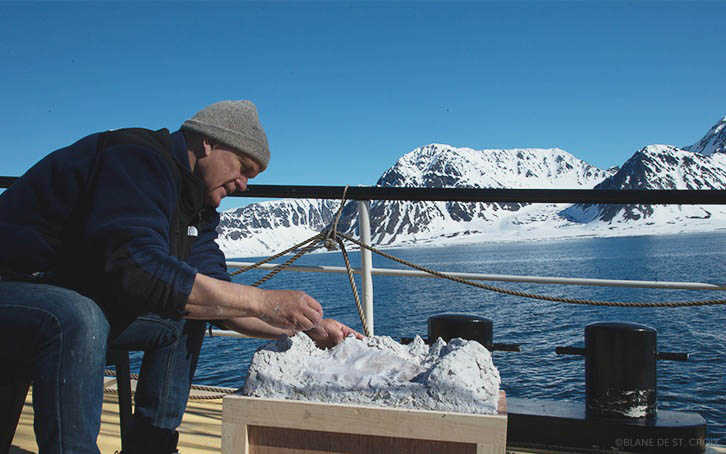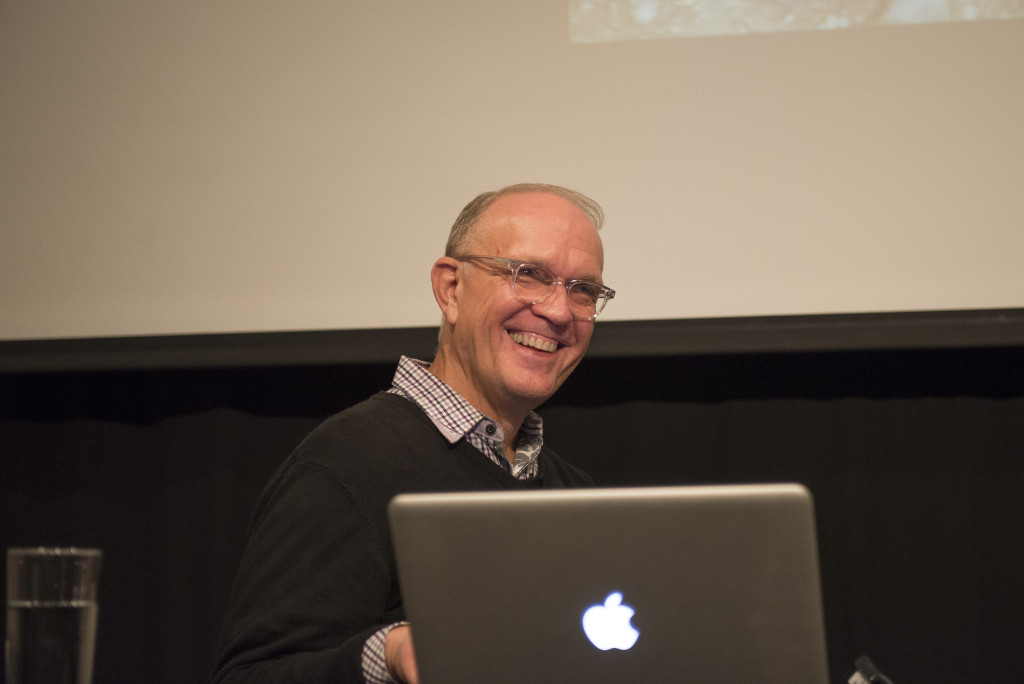This week’s contributing blogger, Chad Alligood, is a curator of modern and contemporary art at Crystal Bridges Museum of American Art. He is also a proud member of the VoCA Board of Directors.

A packed house turned out on September 29, 2016, at Cabinet in Brooklyn for the conversation between artist Blane De St. Croix and VoCA Board Member Robin Clark. The event was the first talk in the second year of our on-going CALL/VoCA Talks series, a partnership with the Joan Mitchell Foundation’s Creating a Living Legacy (CALL) Program. Taken together, these talks seek to provide a larger platform for the innovative CALL initiative while also filling the crucial need for dialogue with artists around the production and preservation of their work. De St. Croix’s work provided ample fodder for discussion on this score, as his practice ranges widely in scale, materials, and even the site of its production.
Primarily a sculptor, De St. Croix addresses geopolitical landscapes in the real world, mining this subject for its rich thematic connections to such pressing issues as the environment and contested borders. His research-based approach sits at the nexus of cultural geography, visual art, and activism. For De St. Croix, the site visit to his landscape subject jump-starts a deeply considered process that ranges from the field to the studio and eventually to the gallery. For example, De St. Croix shared with the audience that his sculpture Pyramiden/Permafrost followed directly from his experience as a participant in an expedition to the Arctic organized by the Arctic Circle program. The vessel carried De St. Croix along with other participants in Arctic waters near the North Pole, where they conducted on-site research and pursued creative activities.

While on this epic adventure aboard a freezing ship, the artist sculpted en plein air, responding directly to the icy landscape. In this way, his work both points to the art history of landscape — to the Impressionists, for instance, who famously sought to convey their immediate impression of the countryside — and the very real issues that the natural landscape connotes in our contemporary world. The artist explained how he seeks to link himself with the scientists he encounters as well as the museum professionals with whom he works.
In addition to the Arctic Circle, De St. Croix’s rambling practice has taken him to the Gobi desert, the wetlands of New Orleans, and even the Mexican-American border, the site that inspired his watershed large-scale sculpture Broken Landscape I (2009). Presented at the Brooklyn art space Smack Mellon, this work meandered 80 feet throughout the gallery, presenting a miniaturized section of the newly constructed border fence the artist encountered on his research travels.

De St. Croix shared that his overarching goal in this work was to “take the viewer on an adventure, and let them physically feel like they were walking the fence line without realizing which side of the border they were on when they got into the space.” That adventure that the artist seeks to inspire often transforms the site of the gallery into a displaced landscape — one which bears the mark of his own deep research and engagement.
Robin Clark’s assessment seems a very apt conclusion here: for her, aesthetics and social justice are given equal weight in De St. Croix’s work in a way that makes it particularly compelling. If you want to know more about the artist and his practice, his upcoming exhibition at Mass MoCA will offer the opportunity to see his work in person — truly the only way to fully experience his unique approach to the time-honored subject of landscape.
A video of this Talk is available online at https://vimeo.com/209769627.
